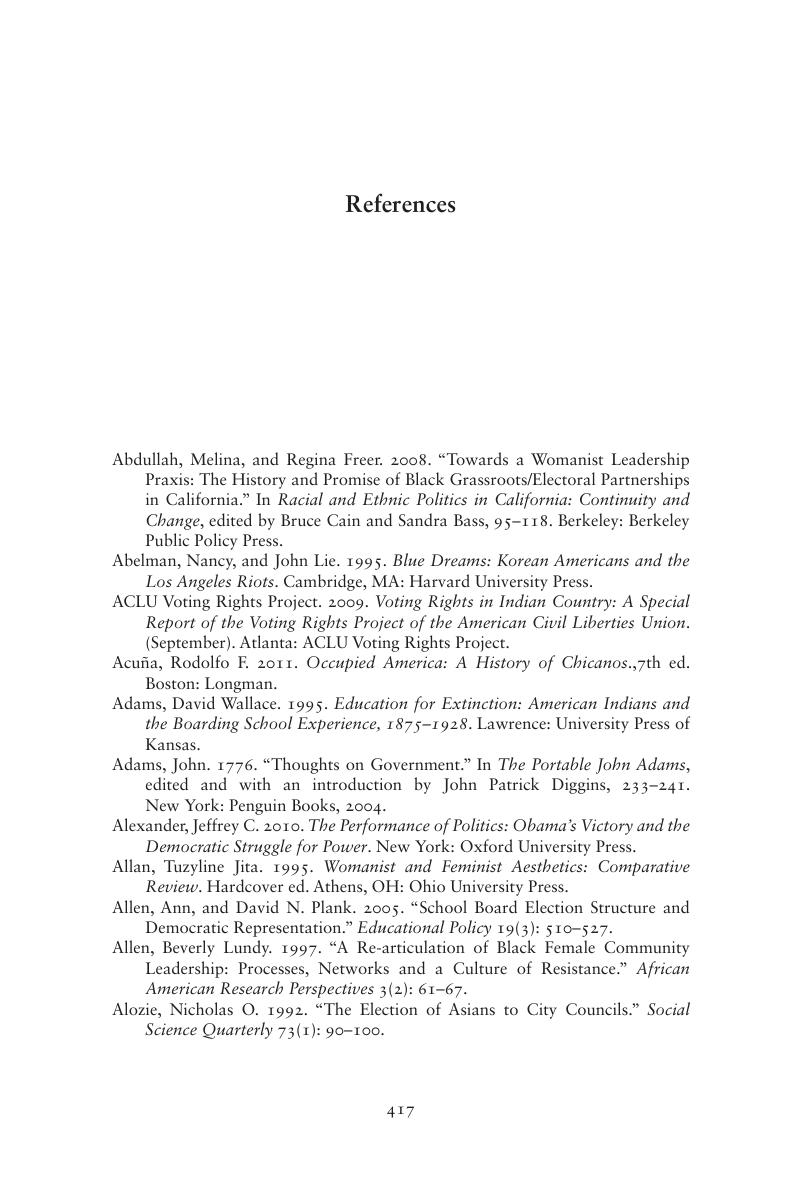Book contents
- Contested Transformation
- Contested Transformation
- Copyright page
- Dedication
- Contents
- Figures
- Maps
- Tables
- Boxes
- Acknowledgments
- Introduction
- Part I Transforming the American Political Landscape
- Part II Paths to Political Office
- Part III Leadership, Governance, and Representation
- Part IV Advancing Democracy in the United States
- Appendix A Data and Methodology
- Appendix B GMCL National Telephone Survey Questionnaire
- References
- Index
- References
References
Published online by Cambridge University Press: 15 December 2016
- Contested Transformation
- Contested Transformation
- Copyright page
- Dedication
- Contents
- Figures
- Maps
- Tables
- Boxes
- Acknowledgments
- Introduction
- Part I Transforming the American Political Landscape
- Part II Paths to Political Office
- Part III Leadership, Governance, and Representation
- Part IV Advancing Democracy in the United States
- Appendix A Data and Methodology
- Appendix B GMCL National Telephone Survey Questionnaire
- References
- Index
- References
Summary

Information
- Type
- Chapter
- Information
- Contested TransformationRace, Gender, and Political Leadership in 21st Century America, pp. 417 - 456Publisher: Cambridge University PressPrint publication year: 2016
